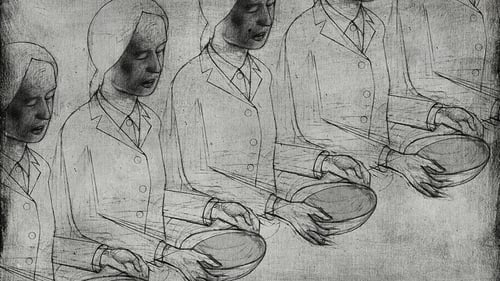
GDR August 31, 1985, Klubhaus in Coswig/Dresden - "Intermedia I - Farbraum/Klangbild"- the event was the first and, as it turned out, the last exhibition by the subculture in East Germany, in which over 40 visual artists and twice as many musicians, performers and super 8 film photographers participated. About 1,200 visitors travelled from all over the GDR to witness a six hour programme on both evenings. It remains unclear to this day how many informers working for the Stasi were among them.

Herself (voice)
An animated documentary short about the central prison for women in the former GDR, based on interviews with former prisoners.

Producer

Director

Producer
Historically, the phenomenon of St Vitus’ Dance (Veitstanz) first appeared in the Middle Ages, when groups of adults and children danced in public until they lost consciousness. In 1988, 13 women and men attempted to revisit the power of this ancient ritual in Erfurt. Dancing at sites of their own choosing, each one developed, without any music, their own movement which they then repeated to the point of ecstasy.

Sound Designer
Historically, the phenomenon of St Vitus’ Dance (Veitstanz) first appeared in the Middle Ages, when groups of adults and children danced in public until they lost consciousness. In 1988, 13 women and men attempted to revisit the power of this ancient ritual in Erfurt. Dancing at sites of their own choosing, each one developed, without any music, their own movement which they then repeated to the point of ecstasy.

Editor
Historically, the phenomenon of St Vitus’ Dance (Veitstanz) first appeared in the Middle Ages, when groups of adults and children danced in public until they lost consciousness. In 1988, 13 women and men attempted to revisit the power of this ancient ritual in Erfurt. Dancing at sites of their own choosing, each one developed, without any music, their own movement which they then repeated to the point of ecstasy.

Director of Photography
Historically, the phenomenon of St Vitus’ Dance (Veitstanz) first appeared in the Middle Ages, when groups of adults and children danced in public until they lost consciousness. In 1988, 13 women and men attempted to revisit the power of this ancient ritual in Erfurt. Dancing at sites of their own choosing, each one developed, without any music, their own movement which they then repeated to the point of ecstasy.

Writer
Historically, the phenomenon of St Vitus’ Dance (Veitstanz) first appeared in the Middle Ages, when groups of adults and children danced in public until they lost consciousness. In 1988, 13 women and men attempted to revisit the power of this ancient ritual in Erfurt. Dancing at sites of their own choosing, each one developed, without any music, their own movement which they then repeated to the point of ecstasy.

Director
Historically, the phenomenon of St Vitus’ Dance (Veitstanz) first appeared in the Middle Ages, when groups of adults and children danced in public until they lost consciousness. In 1988, 13 women and men attempted to revisit the power of this ancient ritual in Erfurt. Dancing at sites of their own choosing, each one developed, without any music, their own movement which they then repeated to the point of ecstasy.







